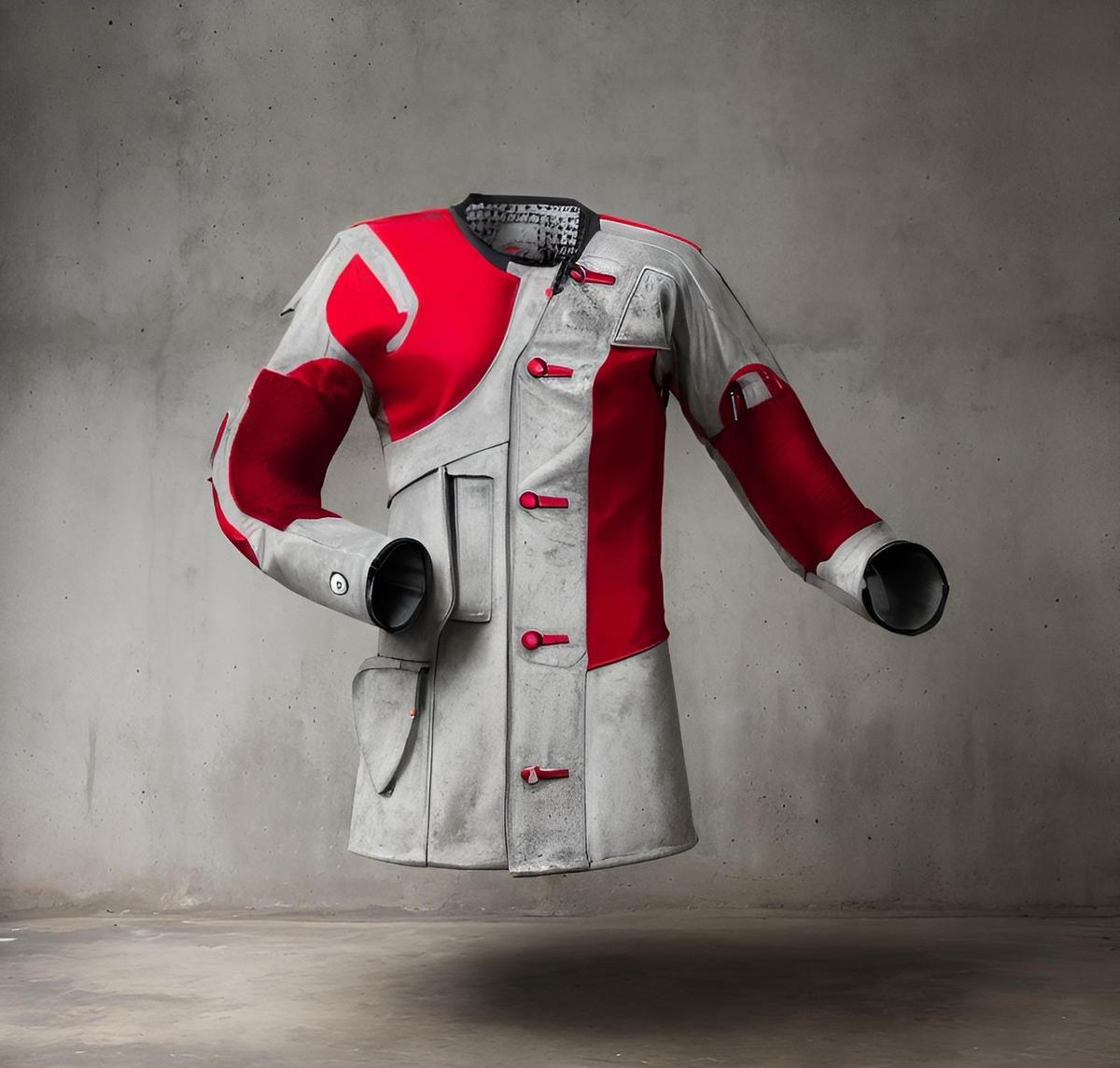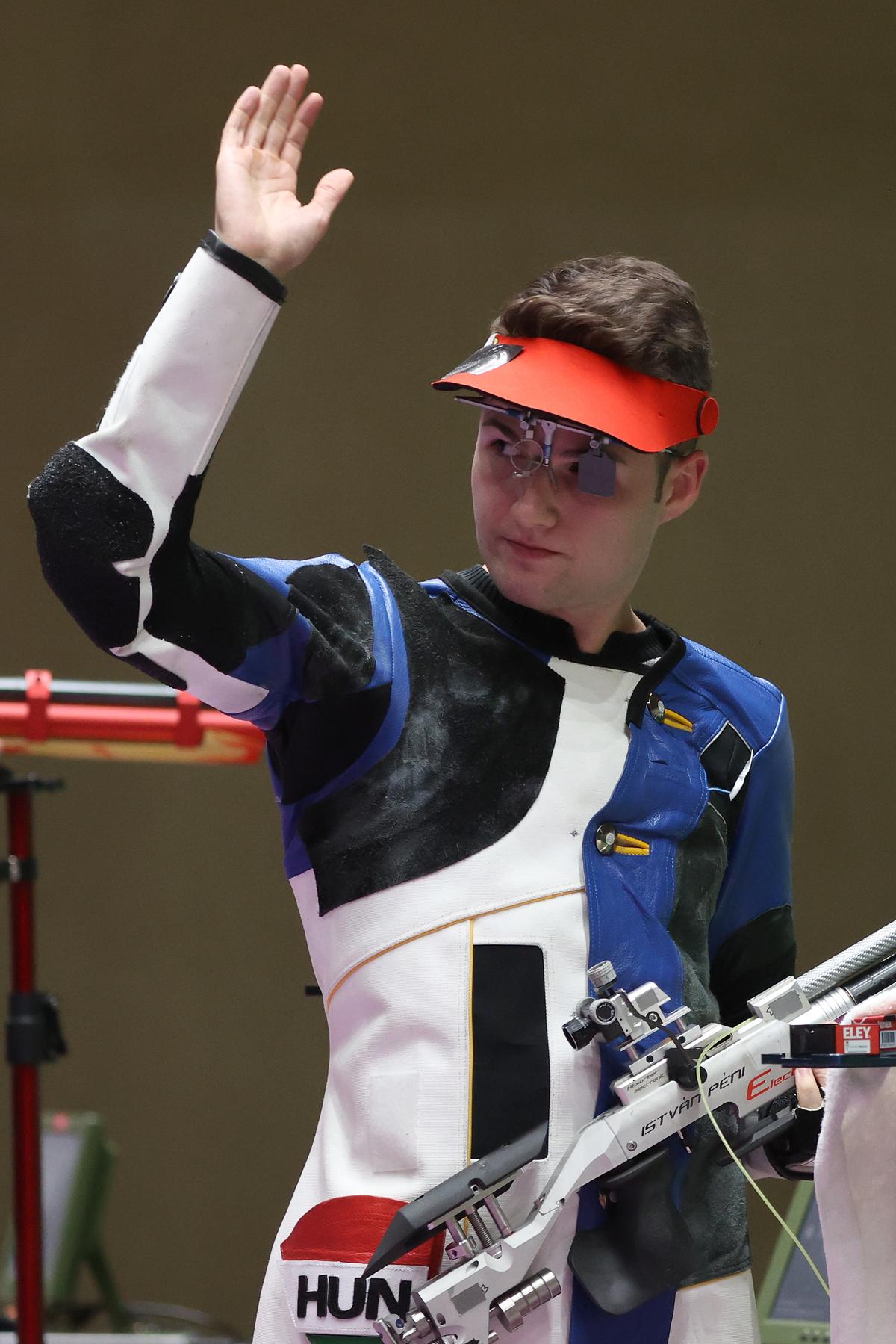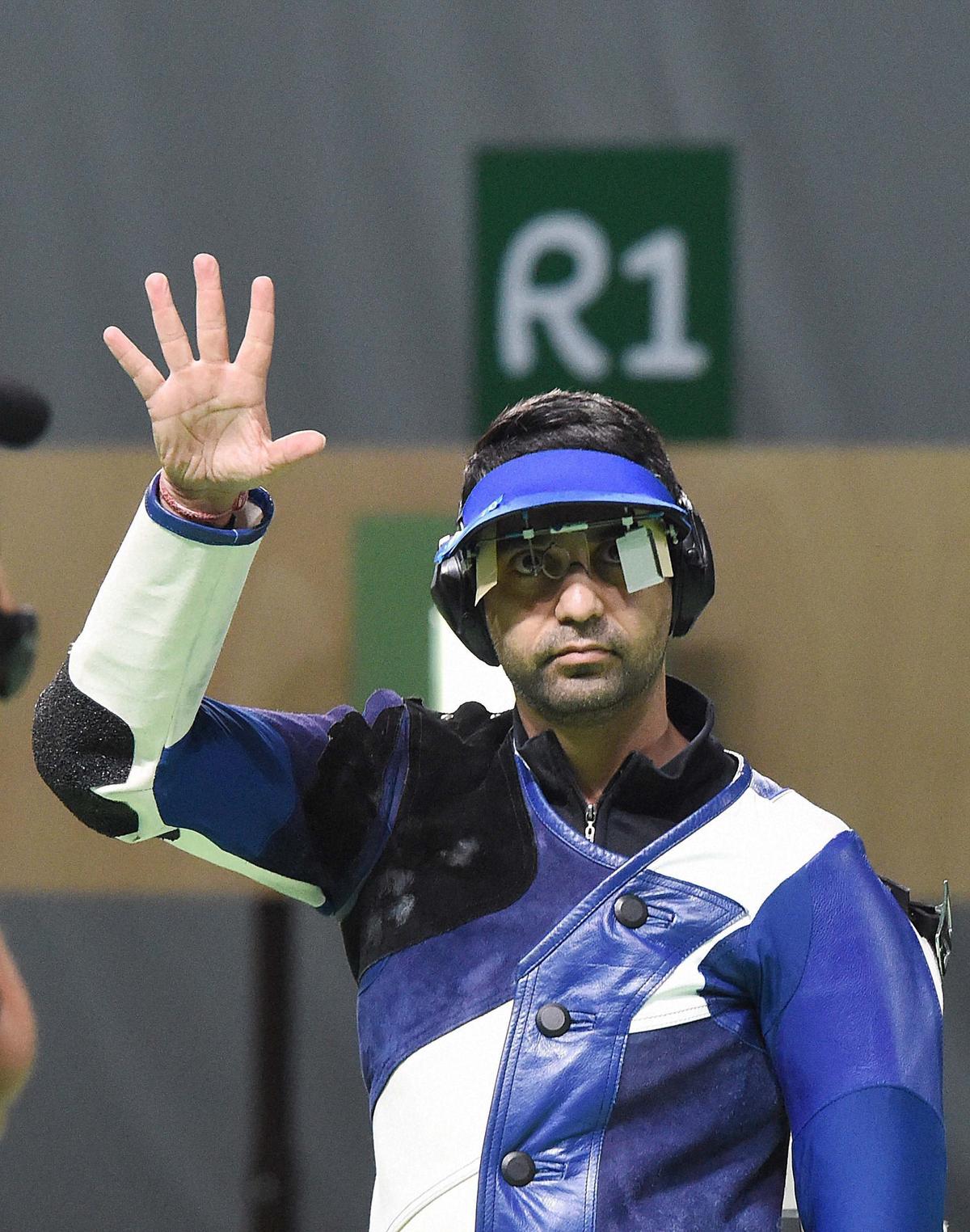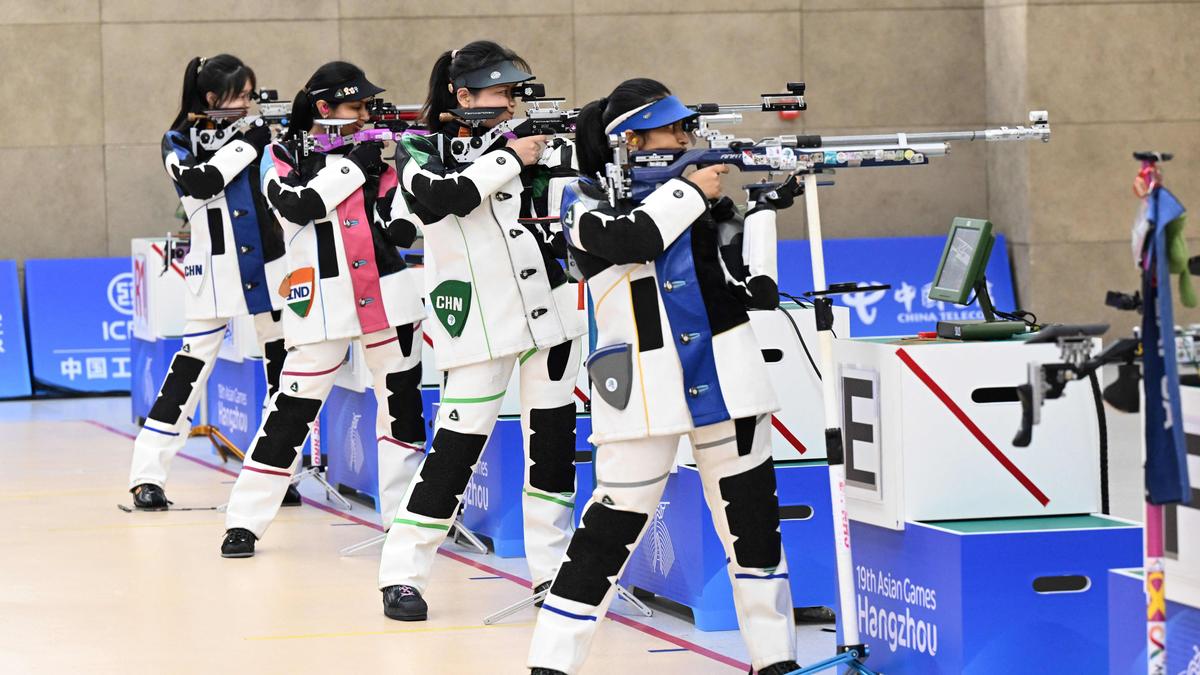The Capapie effect: How a Mumbai company has revolutionised the sport of shooting
Back in the summer of 2019, at his academy in Dortmund, German coach Heinz Reinkemeier was overseeing a practice session by the Indian junior rifle team when he was astonished by the scores that the young shooters were posting. Reinkemeier, regarded as one of the finest minds in air rifling and the former coach of Abhinav Bindra, suspected that the impressive shooting may have something to do with their attire. “I asked Elavenil Valarivan — who seemed to be about the same size and weight as me — if I could wear her jacket and shoot a few series myself,” says Reinkemeier, in a conversation with Sportstar.
Using the old scoring system instead of the current decimal point one, he shot a remarkable 390 out of 400. His hunch proved correct.
“It’s been nearly 40 years since I shot competitively, and despite my age and the time away from the sport, 30 out of my 40 shots landed inside the 10-point ring. I felt an incredible advantage,” says Reinkemeier, who immediately asked his German students to use the same brand of jackets the Indians were using.
CLICK HERE FOR ALL THE PARIS 2024 UPDATES
He also made a bold prediction. “I remember saying that scores in air rifle events were going to rise very high in the next few years.”
How true he was.
Rapid improvement
As we approach the 2024 Olympics, the average scores in the prestigious 10m air rifle event have been steadily climbing, reaching levels that seemed impossible just a few years ago.
Aishwary Pratap Singh Tomar (left), who wears a Capapie jacket, has qualified for the Paris Olympics.
| Photo Credit:
RITU RAJ KONWAR
Aishwary Pratap Singh Tomar (left), who wears a Capapie jacket, has qualified for the Paris Olympics.
| Photo Credit:
RITU RAJ KONWAR
The world record scores in qualification rounds have surged to 637.9 for men and 636.3 for women, compared to 633.5 and 634 before the Tokyo Olympics.
At the ISSF World Cup in Munich this year, the final major competition before the Paris Olympics, the cutoff scores to reach the finals in the men’s and women’s 10m air rifle events were 632.6 and 632.5, respectively. This required shooters to average over 105.4 per series of 10 shots to make the finals.
In contrast, at the 2021 edition in Osijek, the last major event before the Tokyo Olympics, the final qualification scores were 627.7 for men and 628.2 for women, averaging 104.5 and 104.7 per series. At the Tokyo Olympics, the cutoff scores were 629.2 for men and 628.5 for women, averaging about 104.9 and 104.8 per series.
Although the difference of less than 1 point per series between Tokyo and Munich may not seem a lot, it has impacted the overall standings, leading to notable improvements in world shooting standards.
Those with Tokyo-level scores would have placed 31st in the men’s event and 49th in the women’s event at the Munich World Cup, far from making the finals. Coaches and players anticipate even higher standards at the Paris Olympics.
Comparing these scores to the 2016 Olympics, where decimal scoring was first introduced in qualification rounds, the last finalist in the men’s 10m rifle qualified with a score of 625.5.
“There’s no margin for error currently. You need to be on top of your game and you also have to be lucky,” says István Péni, who placed fifth in the men’s 10m air rifle event at the Tokyo Olympics.
While improved training has contributed to higher scores, shooters and coaches agree that it’s not the breakthrough factor. “Scores naturally go up over time with technological advancements and more knowledge of training, but the rise in the last five years in shooting has been extraordinary. It is undoubtedly because of the changes in suits,” says Ginny Thrasher, gold medallist in the women’s 10m air rifle competition at the Rio Olympics. “They have become stiff to a point where the results of people without a suit with the new material…are noticeably lower.”
Tough act: Anjum Moudgil at the Olympics selection trials in Bhopal wearing a Capapie jacket. The increased stiffness of modern jackets makes the sport more forgiving for shooters.
| Photo Credit:
RITU RAJ KONWAR
Tough act: Anjum Moudgil at the Olympics selection trials in Bhopal wearing a Capapie jacket. The increased stiffness of modern jackets makes the sport more forgiving for shooters.
| Photo Credit:
RITU RAJ KONWAR
Thrasher backs her point by comparing air rifle scores to air pistol scores. At the Munich World Cup, the qualification score to make the final of the men’s 10m air pistol event was 584, while for women it was 578.
At the World Cup in Osijek, the qualification scores were 580 and 578, respectively, whereas for the Tokyo Olympics, they were 578 for men and 577 for women.
“When you look at other events like air pistol between the same ranges, they don’t have the same increase. This shows that suits are the dominant factor in the increase of scores since 2019,” says Thrasher.
Differentiating factor
Unlike pistol shooters, competitors in the 10m air rifle events are permitted to wear specialised suits. “Shooting suits are like running cleats in track. You can run barefoot, but cleats make it more comfortable, help you run faster, and reduce the chance of injury. Our suits offer the same benefits in rifle shooting,” says Thrasher.
The main function of the shooting jacket is to support the shooter’s body. While this may seem like a no-brainer at face value, rifle shooters maintain static positions that can lead to injuries. “Staying in those positions for long periods is not healthy,” says Joydeep Karmakar, who placed fourth in the 50m three-position event at the London Olympics and is now one of the top coaches in the sport. “I know many shooters who have had to undergo surgery on their back and neck due to long-term stress on those areas.”
Reinkemeier further explains, “In rifle events, shooters lean back away from the target toward their heels, which is an unnatural position. Jackets were introduced to relieve stress on muscles, tendons, and bones. A properly fitting jacket supports the back and reduces the effort needed to hold that position.”
While shooting jackets primarily reduce stress on the spine, they also provide critical stability for aiming at tiny targets, like the bullseye (10.9), which is about the size of a period at the end of this sentence in size 12 Times New Roman font. “Compared to regular sportswear, a good jacket reduces movement by about 80 to 90 per cent,” says Reinkemeier. “The latest generation of jackets further cut that movement by an additional 10 to 20 per cent. If an old jacket allows for 30mm of movement per second on your rifle, the new ones reduce it to about 15 to 20mm. That’s a tremendous advantage,” adds Reinkemeier.
The jacket he is referring to is the Capapie NSG Top Line (below). Introduced by the Mumbai-based company Capapie Sports in 2018, it has become ubiquitous in elite shooting, entirely replacing previous favourites from Germany and Korea.

Capapie NSG Top Line
| Photo Credit:
Special Arrangement
Capapie NSG Top Line
| Photo Credit:
Special Arrangement
For Reinkemeier, it’s easy to see why. “A shooting jacket is different from a regular one. The one made by Capapie has around 25 segments, each designed with specific materials for different purposes. For example, the elbow of the trigger arm has a rubber layer to improve grip against the abdomen. However, the most important parts are the stiff sections in the lower back and the right flank of right-handed shooters. These areas provide maximum resistance to movement. These bands determine the jacket’s strength and, combined with reinforced seams, create a sturdy framework. When the jacket is closed around the upper body, it forms a tube-like architecture that is hard to bend,” explains Reinkemeier.
For rifle jacket manufacturers, the challenge has been to pass the ISSF’s thickness and stiffness tests. According to the rules, all parts of the back — the segment that provides the maximum support — must have a maximum thickness of 2.5mm and a minimum stiffness of 3.0mm on ISSF’s own measuring device.
Worldwide presence
For a long time, rifle suits were made of leather (left), which was later replaced by treated canvas. According to Nilesh Rane, the founder of Capapie, his company pioneered a canvas-synthetic hybrid called Capitex that meets ISSF standards while providing improved stiffness compared to previous jackets. Capapie also offers bespoke tailoring to fit individual shooters perfectly. “The material is the most important factor. The quality, measurements, and individual shaping of Capapie are quite good,” says Reinkemeier, whose opinion is shared by many.
In Tokyo, every medal winner in the men’s and women’s air rifle events wore a Capapie jacket, and that trend has only grown. “Today, 99% of athletes are using it, including shooters from China. If you don’t wear it, you can’t compete,” says Bindra. The same jackets were worn by medallists at the 2022 and 2023 World Championships.
Bindra is no stranger to Capapie, having worn its jacket during the 2007 World Championships, where he won gold. But even he admits that there are significant differences in the jackets used today. “Back in 2007, it felt almost like wearing pyjamas. The material was very soft. Now, it’s very rigid, but it still passes the testing standards, so you can’t blame the manufacturer,” says Bindra.
The increased stiffness of the jacket makes the sport more forgiving for shooters. Reinkemeier says, “It’s like comparing a carbon fibre cycle to a metal one. If you could go 35 kmph on a metal bike, you might reach 40 kmph with the same effort on a carbon fibre one. Similarly, in the past, 80 to 90 percent of a shooter’s effort went into maintaining position for maximum stability. Now it’s probably closer to 70 percent, meaning 30 percent of their energy and focus can go towards other aspects of shooting.”

Game of luck: “There’s no margin for error currently. You need to be on top of your game and also have to be lucky,” says István Péni, who placed fifth in the men’s 10m air rifle event at the Tokyo Olympics.
| Photo Credit:
Getty Images
Game of luck: “There’s no margin for error currently. You need to be on top of your game and also have to be lucky,” says István Péni, who placed fifth in the men’s 10m air rifle event at the Tokyo Olympics.
| Photo Credit:
Getty Images
Experience no longer required?
This means that experience no longer holds the same significance in contemporary shooting as it once did, with the average age of shooters dipping. In India alone, those who are consistently posting record scores are getting younger by the year. “One of the hardest aspects of air rifle shooting is developing a standing position that provides the most stability. It’s not something that comes easily; it takes years to perfect,” explains Karmakar.
“In the past, shooters had superior internal body position, where the architecture of their stance along with support from their jackets helped them remain stable. Now, it’s the other way around: the jacket is like an exoskeleton, an outer shell controlling positioning from the outside. It’s fairly clear that shooters of today rely less on muscle memory and more on their jackets. However, if the scores are improving and following all the rules, then I’m not really sure what the problem is,” Karmakar adds.
Péni who will compete in Paris after finishing fifth in the 10m air rifle event at Tokyo, remarks that this shift has narrowed the gap between shooters. “The new jacket technology has helped the second line of shooters catch up with the first. The gap between the top shooters and those who were once considered to be in the middle isn’t nearly as pronounced as it used to be,” he says.
As stability — once the defining factor among shooters — has increased, Thrasher points out that other skills have become more important.
“Shooters all over the world have adapted well to the advancements and have quickly adopted the new technology. They understand that the current suits place less emphasis on perfect positions and more on technique and mental strength, so they train accordingly. A great athlete’s mindset involves looking at changes positively and finding ways to make them work for them,” she explains.
What’s the hype?
Reduces movement by about 80 to 90 per cent, with newer jackets reducing it by an additional 10 to 20 per cent.
Reinforced areas present in the lower back and right flank for maximum resistance to movement.
Bespoke tailoring ensures optimal movement.
Capapie jackets meet ISSF standards – maximum thickness of 2.5mm and minimum stiffness of 3.0mm.
The cost of custom-made jackets for elite shooters is over $1000.
However, some believe the technology may have gone too far, reducing the skill aspect required in the sport. Bindra is among them. “What we’re witnessing in shooting right now isn’t a healthy sign for the sport, to be very honest,” he argues. “We are in a situation where an athlete can come in after just eight or nine months and score 630, suggesting that the element of skill and effort needed to reach a world-class level is somehow being bypassed.”
“For any sport to do well, there has to be some level of uncertainty. There should be ups and downs throughout a competition, right? That is what makes sports inherently interesting. But today, you could shoot a 630 and still not make the top 15. It just gets so boring to watch. Every sport needs to strike a balance between technological support that enhances performance and the actual skill, resilience, and training of the athlete,” he adds.
Technological doping?
Bindra compares the current scoring at the elite level to a T20 cricket match, where shorter boundaries and bigger bats allow batters to hit every ball for six. “If you look back a decade, a score of 10 or 9 on the final shot could mean the difference between winning and making it to the finals. It was neck-and-neck and interesting in that sense. But now, with scores like 636 and 637, that averages out to a little over 10.6 per shot, it’s starting to feel more like a video game,” says Bindra.
Reinkemeier adds that as long as the jackets are legal and available to all shooters, they will need to adapt. “Right now everyone is using Capapie jackets, so there’s no real advantage. I think this is a step forward for everyone. The competition will remain as hard as before.” But technique will become an important factor once again, feels Reinkemeier. “The one who has better triggering and control of nerves under pressure will be the winner.”

Abhinav Bindra wants balance between technological advancement and maintaining the integrity of the sport
| Photo Credit:
PTI
Abhinav Bindra wants balance between technological advancement and maintaining the integrity of the sport
| Photo Credit:
PTI
There are some, though, who worry that the technological edge provided by the latest jackets might end up hurting the sport in the long run. Thrasher reveals that the cost of these custom-made jackets for elite shooters exceeds a thousand dollars each, creating an unavoidable financial burden for the shooters.
“At the lower levels it has turned into an arms race. Athletes who once competed with minimal investment can no longer do so. Those investing thousands on custom suits now have an insurmountable advantage. This raises concerns about the accessibility and future of our sport,” she says. Bindra says there is a precedent in international swimming that shooting might eventually have to follow. In 2008, after 94 per cent of races at the Beijing Olympics were won by swimmers in Speedo’s patented LZR racer swimsuits, the international federation banned full-length bodysuits and instituted changes to fabric types. At that time, the ‘super suits’ were even labelled as a form of ‘technical doping.’
Although Bindra isn’t equating modern-day shooting with ‘technical doping’, he believes a balance must be struck. “I know that the technological aspects of these jackets aren’t illegal right now. But I am fairly certain that if we switch back to the old ones, everyone will be shooting a lot more modest scores. It’s not just me; many shooters, coaches, and officials are seriously thinking about this issue.
“I think it’s an important thing that the administrators of the sport need to reconsider after the Paris Games. The question is — where do they want the sport to really go?”



